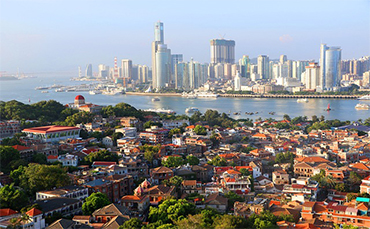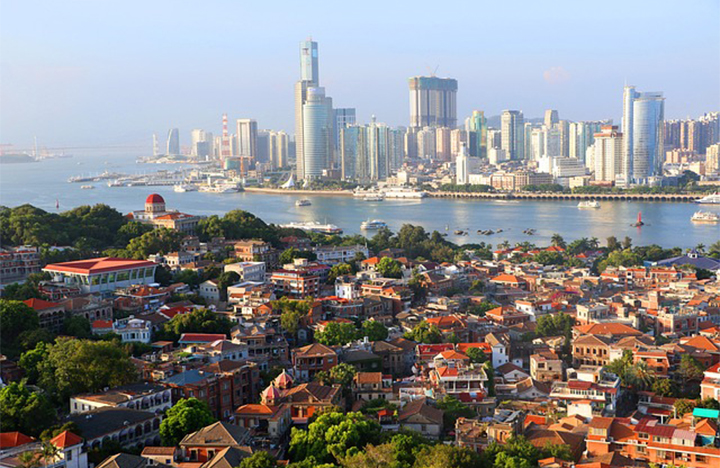



Led by the National Development and Reform Commission, multiple departments have recently issued a plan to advance the construction of community service facilities. Functional facilities and services such as elderly care and childcare will be integrated into urban communities and residential public spaces. Concurrently, with increased policy awareness and support in terms of construction and land use regarding urban renewal, the Ministry of Natural Resources has launched several guidelines to emphasize the leading role of the national spatial planning framework. The planning coordination of urban renewal projects within the land spatial planning system is thus well-enhanced, as newly constructed facilities are expected to be exempted from the original planning plot ratio target.
It has been noted that land use has consistently been a challenging issue in urban renewal. With recent policies from various departments, breakthroughs are expected in areas such as compound land use and land allocation methods.
Recently, reporters visited the newly renovated South Area of Tiantan Street, Dongcheng District, Beijing. The entire community has just undergone comprehensive road renovation and the installation of drying poles in public areas, significantly improving the overall living quality of locals.
The South Area of Tiantan East, ‘aged’ over 40 years, started to encounter issues such as varying degrees of wall peeling, aging upper and lower water pipelines, damaged public area facilities, and chaotic parking. "The transformation project for this community was included in the plan by the street in 2021. We started construction in October 2022, and it was completed in October 2023," said Li Junjian, Deputy Director of the Tiantan Street Office. The project involved the renovation of five high-rise buildings in the community, affecting 594 households and covering an area of 35,000 square meters. "It mainly addresses our residents' demands, including the repainting of staircases and exteriors, updating interior water pipelines, road paving, greenery replenishment, and the installation of smart community surveillance."
The pace of urban renewal has vastly accelerated this year, with the transformation of old neighborhoods playing the leading role. According to data from the Ministry of Housing and Urban-Rural Development, in 2023, the national plan is to commence the renovation of 53,000 old urban neighborhoods, involving 8.65 million households. Based on statistics reported by various regions, from January to October, 52,800 old urban neighborhoods’ renewal projects were newly started, benefiting 8.7 million households, with a construction commencement rate of 99.6% based on the number of neighborhoods.
Simultaneously, relevant departments are further improving facilities and services for a better urban living environment. Recently, the State Council General Office forwarded the National Development and Reform Commission's "Implementation Plan for the Construction of Embedded Service Facilities in Urban Communities." It prioritizes large cities with a population exceeding one million, embedding functional facilities and adaptive services such as elderly care, free community meals, household and health services, and sports fitness into neighborhoods to continuously enhance community functions.
"The construction of 'liveable cities' has become one of the main goals of high-quality urban construction in our country," said Zhang Jing, Chief Planner at the China Academy of Urban Planning and Design. Embedded service facilities in communities address the developmental needs of "people" in a "liveable" city, meeting the residents' transition from a demand for "being there" to a demand for "qualified to be here" in community public service facilities. This is a significant measure to ensure residents have free access to high-quality services at their doorstep.
Zhang Yan, Deputy Director of the Building Energy Conservation and Technology Department of the Ministry of Housing and Urban-Rural Development, stated that the next step is to guide localities in urban renewal to use existing resources, reasonably determine the feasibility of construction projects, and monitor community facility implementations in detail. In the renovation of old urban neighborhoods, supporting facilities will be improved through methods such as supplementary construction, acquisition, replacement, leasing, and renovation, enhancing the living environment. In complete community construction, the focus will be on addressing deficiencies in "our younger and older generation" services, implementing projects such as elderly service stations, childcare centers, and kindergartens.
It is noteworthy that urban renewal is receiving more policy support in construction and land use. Recently, the Ministry of Natural Resources issued the "Planning and Land Policy Guidelines to Support Urban Renewal (2023 Edition)," emphasizing the leadership role of the National Spatial Planning Guideline (NSPG) and strengthening the planning coordination of urban renewal projects within the land spatial planning system. The implementation plan clarifies that government-built community embedded service facilities, as non-profit public service facilities, may be allowed to apply with relaxed planning conditions in pilot cities based on material considerations, as long as they comply with detailed NSPG and do not violate relevant national and local policy technical standards and norms.
Yang Jun, Deputy Director of the Spatial Planning Bureau of the Ministry of Natural Resources, claimed that projects such as municipal infrastructure, public service facilities, and public safety facilities implemented to guarantee basic living needs and address urban deficiencies can be considered for relaxing the planning conditions on added building scale, if they do not negatively impact the surrounding area.
"Land use has always been a trouble for urban renewal. Dealing with historical conservation and land legacy issues has become the first barrier to block our practice. Speaking of specific operations, the acquisition of composite or mixed land after renewal, land price calculation, service life, fee standards could also become troublesome," said Huang Zhengxue, a researcher at the Institute of Land Development and Regional Economics of the China Macro-Economic Research Institute. This relevant department policy addresses these aspects and is expected to make breakthroughs in dealing with the listed problems.
Li Yujia, Chief Researcher at the Guangdong Housing Policy Research Center, stated that in the past, land use was controlled with rigid policies. Fragmented use of land would, on the other hand, lead to lower land use efficiency. By strengthening the planning coordination of urban renewal within the NPSG context, a balanced mix is expected to integrate inefficient land use, thus providing space for urban renewal, activating all stakeholders involved during the process.
Huang Zhengxue noted that this round of urban renewal is different from the top-down government-led, large-scale demolition and construction. It aims to establish a multi-party collaborative model of "government guidance, market operation, and public participation" to improve urban functions, enhance urban quality, and boost urban vitality. Therefore, more attention is paid to environmental protection and optimization of public spaces. He suggested that in the next step, urban renewal requires more coordinated cooperation of policies in investment, taxation, land use, and other aspects.
Translated by Xiong Yuxi